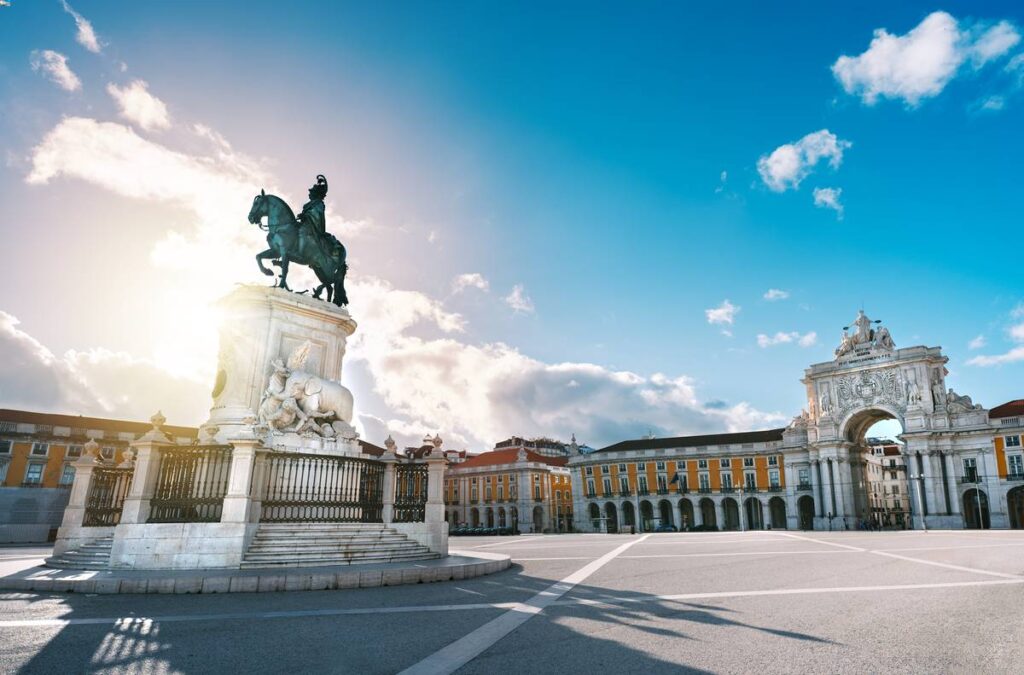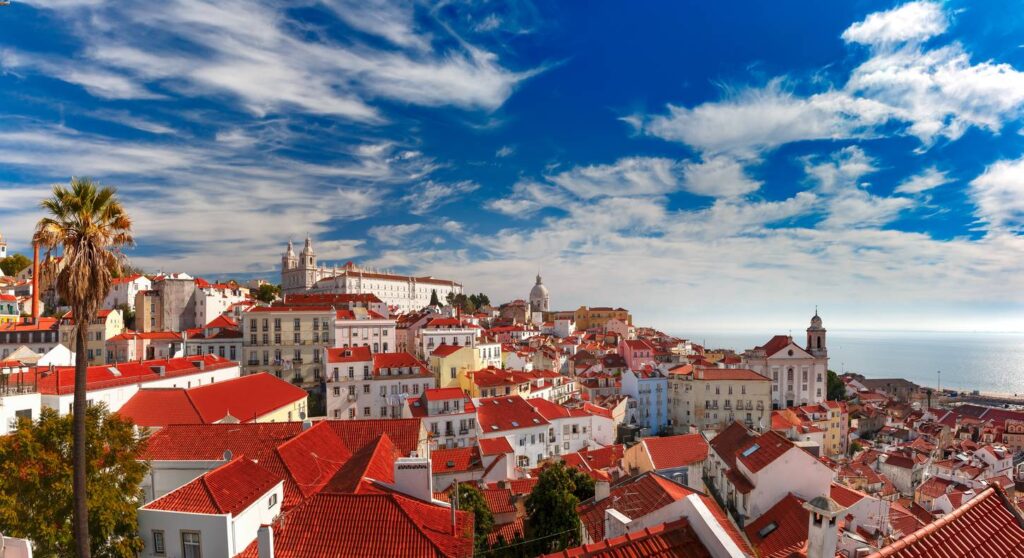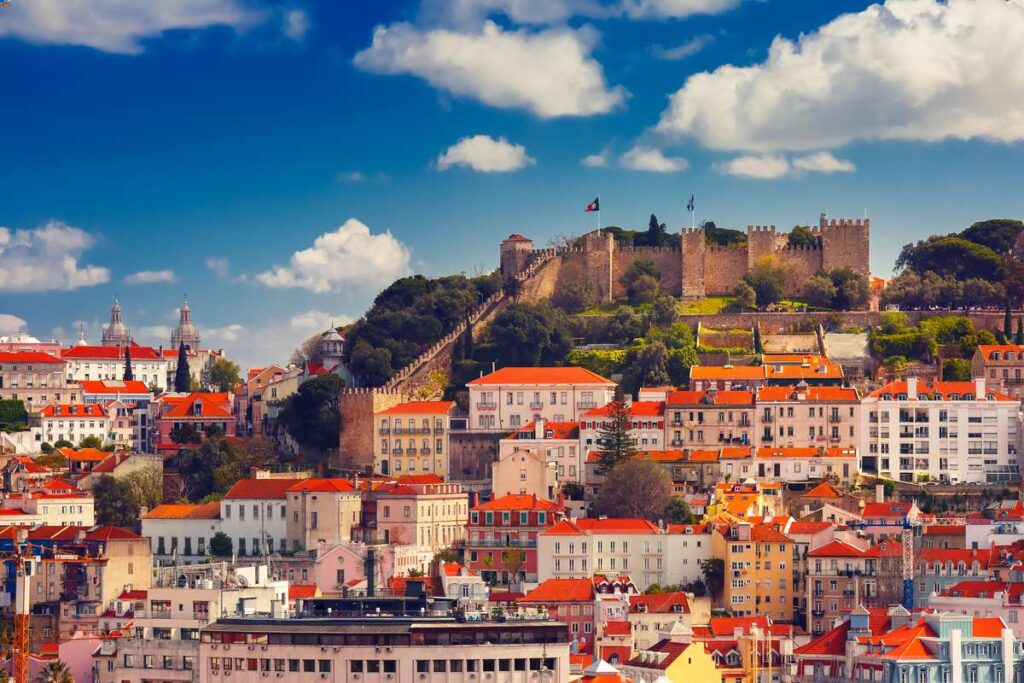Geography’s magnetic pull links, in an intriguing way, distant places.
Here’s a fact – one of the European capitals lies on about the same latitude as New York City.
Surprise!! Guess which city is that – Lisbon, the capital of Portugal!!
Today, we’ve covered some highly interesting info about these two fascinating cities.
Let’s delve into the interplay of geographical alignments and their cultural narratives.
Understanding latitude & its significance
Before we delve into the parallels between Lisbon and New York City, let’s brush up on our geography.
Latitude is the distance north or south of the equator. It is key in determining a region’s climate and seasons.
But can a mere alignment of latitudes truly connect two very different cities?
Which European capital lies at about the same latitude as New York City?
Lisbon lies on about the same latitude as New York City.
As our compass points north, Lisbon and New York City emerge as unexpected twins.
The two cities are both at about 40.7 degrees north latitude. This creates interesting climatic and cultural ties. It’s as if these cities, separated by an ocean, harmonize on the grand stage of latitude.
Lisbon, on the Iberian Peninsula‘s west edge, is near the same latitude as New York’s concrete jungle.
Lisbon sits at a similar latitude to New York’s concrete jungle.
These cities are like two characters in a story. They unfold in a symphony of shared and unique elements.
Lisbon: Where Europe meets New York’s latitude
Lisbon blends old-world charm with a cosmopolitan vibe. The cobblestone streets wind through neighborhoods, whispering tales of seafaring explorers and saudade.
Picture pastel-colored buildings adorned with ceramic tiles, reflecting the sun’s warmth.
Narrow alleyways lead to miradouros, or viewpoints, with views of the Tagus River.
Fado music’s sad strain fills the air. It evokes feelings like the soulful jazz of the Big Apple.
You may also like: Is NYC the Best Place to Live?
Lisbon’s climate vs. New York’s climate
Latitude shapes a city’s climate. It dictates the severity of winters and the heat of summers.
Let’s pull back the curtain on the climatic drama of these two latitudinal companions.
Lisbon has a Mediterranean climate. It has mild winters and summers, kissed by gentle Atlantic breezes.
New York City has a temperate climate with four seasons.
But, it has greater temperature swings. It’s a tale of sweaters and hot cocoa versus snow boots and ice skating.
Both cities dance to different rainfall rhythms. Lisbon enjoys a relatively wet winter and a dry, sun-soaked summer.
Across the Atlantic, New York City has more evenly distributed rainfall.
So those iconic umbrella-toting scenes are a common sight.
Cultural connections beyond the latitude
Latitude might lay the groundwork, but culture paints the vibrant canvas of a city. The histories of Lisbon and New York intertwine like a rich tapestry.
Lisbon’s storied history unfolds with tales of explorers like Vasco da Gama and the Age of Discovery.
Meanwhile, New York’s roots are woven with immigrant stories. They arrived at Ellis Island, in pursuit of the American Dream.
Both are captivating, yet different. They mirror our thirst for adventure.
Step into Lisbon’s eateries, where the aroma of bacalhau and pastéis de nata fills the air.
New York’s street corners are a medley of flavors. They offer everything from hot dogs to global fusion cuisines. Latitude might set the stage, but the culinary symphony plays on with its unique notes.
Architectural parallels between Lisbon & New York
Cities often use their skylines as signatures. Towering structures tell tales of innovation and aspiration. Lisbon and New York’s skylines tell a shared architectural story.
Lisbon’s skyline features the São Jorge Castle perched atop a hill, surveying the city below.
Conversely, New York’s skyline has the Empire State Building and One World Trade Center. These icons have seen the rise of a metropolis. These skylines, separated by an ocean, show cities’ ambition and growth.
Wander the Lisbon streets to find the Belem Tower. It holds tales of maritime greatness.
In New York, the Statue of Liberty beckons dreamers to its shores. These landmarks, sentinels of history, connect cultural significance across continents.
Artistic Vibes: Lisbon and New York
Art can cross borders and languages. It expresses the human experience in vivid strokes.
All in all, Lisbon and New York embrace artistic expression in their own unique ways.
Lisbon’s streets are painted with colorful street paintings. Art galleries, like the Museu Nacional de Arte Antiga, showcase old masterpieces.
In New York, the vibrant streets of SoHo and the revered MoMA offer artistic sanctuaries. Different cities, and different canvases, but the artistic spirit remains universal.
Lifestyle and Pace: A Comparative Outlook
From the calm streets of Lisbon to the fast pace of New York, a city’s rhythm is its life.
Lisbon has a relaxed pace. Coffee breaks turn into long talks. Locals revel in their “saudade.” The city invites you to savor the moment and enjoy life’s simple pleasures. It’s a contrast to New York’s frenetic buzz.
In the heart of Manhattan, life moves at lightning speed. The streets are a symphony of footsteps and honking taxis. Each person is a note, adding to the city’s busy life. It’s a dynamic dance where time is of the essence.
You may also like: Discover All 22 Museums in Midtown NYC
Economic Landscapes: Flourishing in Different Ways

Latitude isn’t just a line on a map; it can impact a city’s economic trajectory.
Lisbon and New York have found different avenues to prosperity.
In recent years, Lisbon has become a European tech hub. It’s attracting startups and entrepreneurs. The city’s warm climate and spirit invite growth, unlike New York’s finance.
New York’s Wall Street stands as the epicenter of global finance. The city’s iconic skyline shows its economic power. It reflects a world shaped by stock markets and financial institutions.
Language Diversity: Multilingual Lisbon, Multicultural New York
Language is more than a means of communication; it’s a reflection of a city’s cultural tapestry.
Lisbon and New York’s linguistic landscapes mirror their diverse communities.
Lisbon resonates with many languages, from Portuguese to English. This reflects its global appeal.
New York’s languages come from around the world. They make it a true melting pot of cultures.
In both cities, language is a bridge that connects communities.
Exploring Natural Beauty: Parks and Beyond
Beyond the concrete sprawl, natural beauty offers respite from the urban pulse. Lisbon and New York each have their own green sanctuaries.

Lisbon’s green spaces provide stunning views and peaceful retreats in the bustling city.
For example, parks like Eduardo VII Park offer quiet spaces to reflect and relax. They balance well with New York’s parks.
Transportation in both locations
Efficient transportation is the backbone of any thriving city. Lisbon and New York have embraced different approaches to urban mobility.
Lisbon’s trams, funiculars, and metro connect its neighborhoods. It’s a tapestry of transport that threads through the city’s fabric, a stark contrast to New York’s subway system.
The New York City Subway is a busy network of underground trains. It moves millions of people every day.
Overall, it’s a reflection of the city’s heartbeat. A constant hum that echoes through its tunnels and stations.
Entertainment & Nightlife
As the sun sets, the lights come up on a different kind of stage. Lisbon and New York offer distinctive yet equally enthralling entertainment and nightlife.
Lisbon’s nights are filled with the soulful strains of fado music. In intimate settings, singers pour their hearts into sad songs. They capture longing and nostalgia.
On the other side of the ocean, Broadway’s dazzling marquees light up the night. The theaters host a mix of song and dance. They enchant audiences with tales of every emotion.
Community warmth and diversity
Latitude might set the stage, but it’s the people who breathe life into a city. Lisbon and New York offer contrasting yet equally captivating communities.
The Portuguese word “saudade” means a longing for something that was. Lisbon’s neighborhoods feel familiar and warm. They are a canvas for saudade to flourish.
New York’s streets are a celebration of cultures. The diverse people on its avenues create a unique, united city.
You may also like: Is NYC the Best Place to Live?
Frequently Asked Questions on NYC & Lisbon
Is Lisbon’s climate similar to New York’s due to their matching latitudes?
While latitude does influence climate, other factors such as ocean currents, prevailing winds, and geographic features also play a role in shaping the climate of a city.
Thus, while Lisbon and New York share similar latitudes, their climates are also influenced by these other variables.
Are there any other cities that share similar latitudes with iconic places around the world?
Yes, several other cities around the world share similar latitudes with iconic locations. For example, Barcelona and Chicago, as well as Rome and New York, share similar latitudinal alignments.
What role does cultural heritage play in the similarities between Lisbon and New York?
Cultural heritage serves as a bridge that connects these two cities. Historical narratives, artistic expressions, and culinary influences contribute to the cultural parallels despite their geographical separation.
Is there a term that describes the phenomenon of two distant cities sharing a similar latitude?
While there isn’t a specific term for this phenomenon, it underscores the interconnectedness of the world and how geography can shape certain aspects of cities’ identities.
How has modernization affected the traditional aspects of both Lisbon and New York?
Modernization has brought changes to both cities, influencing their infrastructure, economies, and lifestyles. While embracing progress, they also strive to preserve their unique cultural and historical characteristics.
Conclusion
So now you know which European capital lies on about the same latitude as New York City – it’s Lisbon.
Latitude knits together the stories of Lisbon and New York City, two cities that dance to the rhythm of the same latitude line but sing their own distinct melodies.
While geography may have set the stage, it’s the people, culture, and history that have taken the spotlight.
Thanks for reading!!
Like the content? Don’t forget to share it with your friends!! Or, if you want to contribute interesting and educational content like the ones you just read, read our “Editorial Guidelines” and send your helpful content on NYC insights for our review.
